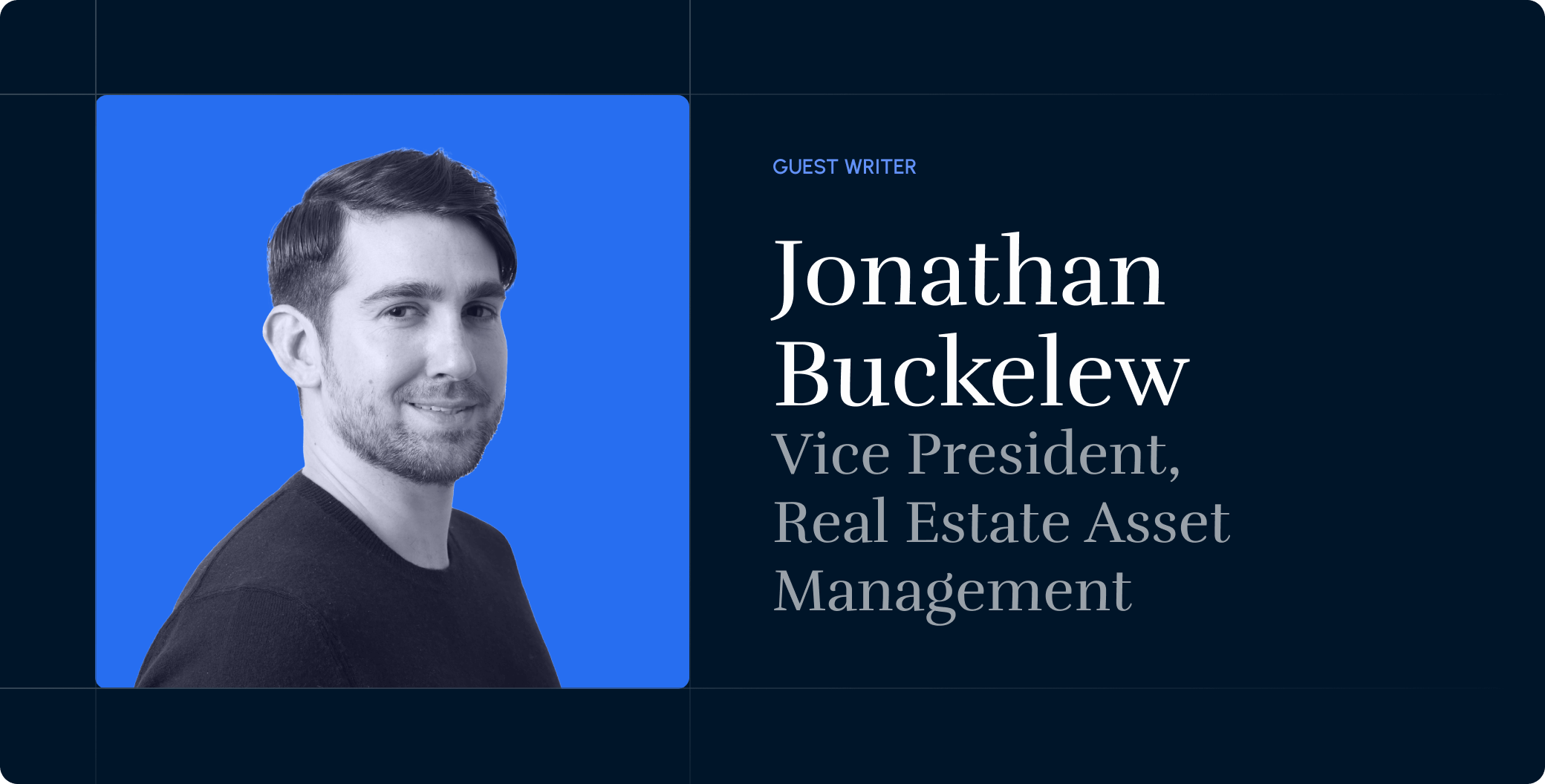Operational costs, inflation, and higher interest rates have impacted every part of commercial real estate. Acquisitions have slowed, deals are harder to find, and raising capital takes more effort. For multifamily operators, expenses keep increasing, to the point that they grew 2.2% faster than NOI in 2024.
Like many others, I’ve seen firsthand how these changes mean we can’t keep operating like we always have and expect great results.
The best defensive move right now is to focus on areas in our control and find better ways to run properties. Here’s how firms can use PropTech to do just that.
Multifamily operational challenges
A recent article from the National Apartment Association titled “No Relief From Expenses” sums it up well. Costs rose across every area of property operations, with some of the largest increases including:
- Bad debt: 39%
- Insurance costs: 26.2%
- Repairs and maintenance: 11.8%
- Administrative: 11.7%
- Property taxes: 9.7%
Rising expenses cut into NOI and make it harder to deliver returns to investors. If you can’t reach the valuation you need, it also affects your exit strategy and limits your options.
This isn’t the same operating environment we saw for the past 10 years. Ever since inflation spiked to 9.1% in 2022 and interest rates increased, the way we approach things has to change. Historically, most operators are dealing with:
Lack of SOPs
Many property management teams run their business without documented standard operating procedures. That makes it easier for mistakes to happen, harder to train new employees, and almost impossible to scale. It also means you risk losing knowledge when key people leave.
The other problem is that without SOPs, how do you improve anything? It’s not very useful to create processes once and never update them. Things change, and your approach should, too. The issue is that if nothing’s written down in the first place, there’s nothing to refine or build on.
Legacy thinking
Even some of the largest property management companies in the country still rely on old-school strategies. For example, they market vacancies the same way they have for the past ten years, using the same listing platforms. That’s not enough in higher-supply markets. Firms need to be open to other ways to drive traffic and be more responsive to potential residents.
Bad data and siloed systems
Your ability to make the right operational decisions is only as good as the data you have. If operators rely solely on property management systems that don’t integrate with other tools and don’t have accurate data, it impacts all operational decisions.
Some firms are implementing new technologies, but the integration challenge means they don’t have a central place to see the full picture of what’s happening.
Areas of innovation
The good news is that many new innovations can help improve operations in all areas of property management. Some of the most exciting areas include:
Marketing
When there’s a limited housing supply, marketing is easy, and you can quickly fill vacancies. In the past couple of years, we’ve seen more developments come online and increased competition for qualified renters. Converting every solid lead into a tenant gets harder and harder.
This is where your marketing strategy can benefit from AI. These tools can respond to potential leads and book tours faster than leasing agents. Speed wins because you can improve your chances of signing a lease by 40% if you respond within the first 1-2 minutes of an inquiry.
That’s hard to do manually because leasing agents are busy. They don’t work 24/7, and they have other priorities like handling walk-ins or giving tours, so they can’t always respond that fast.
Automating the initial response with AI leasing tools like EliseAI gets in touch with the prospective tenant within 20 seconds through text, email, or voice. It’s cost-effective, and I’ve seen it increase lead-to-tour conversion by 65%. More tours mean more applications and shortens the time it takes to fill units.
Collections
Collecting bad debt can be a manual process, with employees making calls or sending letters. This is tedious and time-consuming and creates an extra operational burden. AI collection tools can automate this process and improve profitability.
I’ve seen amazing results with these solutions. For example, we had one property with 15% bad debt, and after implementing EliseAI for collections, that number dropped to 7% almost immediately and eventually to 3%. The software automatically contacted residents, reminded them of their balance, and explained what would happen if they didn’t pay. The constant communication worked better than we could have expected.
Maintenance
Perhaps one of the biggest areas for potential innovation is around maintenance. For operators with older B or C-class properties, keeping properties updated can be a huge cost. Combine that with a shortage of maintenance labor, and it gets even harder to staff and manage ongoing maintenance. A lot of skilled workers are choosing higher-paying contract roles like HVAC or plumbing instead of on-site maintenance jobs, which makes retention a challenge.
There’s a ton of opportunity for predictive maintenance, centralized solutions, and smarter ways to cut down on unnecessary service calls. Tools like Property Meld and HappyCo can help reduce turnover because maintenance is one of the top reasons tenants leave. If they feel like their issues aren’t getting addressed, they’ll start looking for a new place whether their rent went up or not.
Finding the right technologies
Once you’re ready to invest in software, there are a few steps to help you get exactly what you need. We’ve all chased shiny objects, thinking a new tool will fix everything. The reality can be different.
So, how do you find the right solutions that help you run better properties and increase profitability? Here’s what I recommend:
- Prioritize: Start by listing out the biggest challenges in your organization. Focus on the ones that can have the biggest impact on your operations and profitability.
- Research: Put together a list of potential solutions. Talk to others in the industry to see what’s working for them. You can also get information at conferences or industry associations.
- Get on demo calls: Get on a call and see firsthand if the solution actually solves your problem and fits your workflow. Also, take a look at the interface and see if it’s easy to understand or looks complicated.
- Ask tough questions: Dig deeper before making a decision. How well does it integrate with the systems you already use? How easy is it to get up and running? How long will it take to train your team? What kind of training resources are available? And what does ongoing support look like?
- Monitor adoption and effectiveness: After implementation, check in with your team to make sure the tool is actually making their jobs easier and improving performance. If there are issues, work with the vendor on options to help your firm maximize ROI. You can also create internal training videos using tools like Loom, Guidde, and Tango.
Emerging trends
Beyond solving current challenges, there’s a lot happening in the industry that’s worth keeping an eye on.
We’re all aware of AI as a major trend that every industry wants to leverage. In property management, these tools can improve time management and automate repetitive tasks. One way this benefits operations is the ability to centralize roles. For example, your team can process invoices or file evictions centrally instead of having someone at each property site.
Another interesting transition is that companies are moving away from legacy property management systems. We’re seeing new players in the market, like DoorLoop and Resman. Operators are moving to these solutions for better data integration, more flexible usage models, and improved functionality.
Key takeaways
Every industry depends on technology in some way, and over time, that technology evolves to better support the business. Multifamily is no different. If your properties aren’t meeting performance goals, it’s worth looking at where new innovations could help you improve.
Even if you’re happy with your current numbers, it’s still smart to stay aware of what’s changing. There’s always something new emerging, and if you’re not paying attention to it, your competition probably is.










